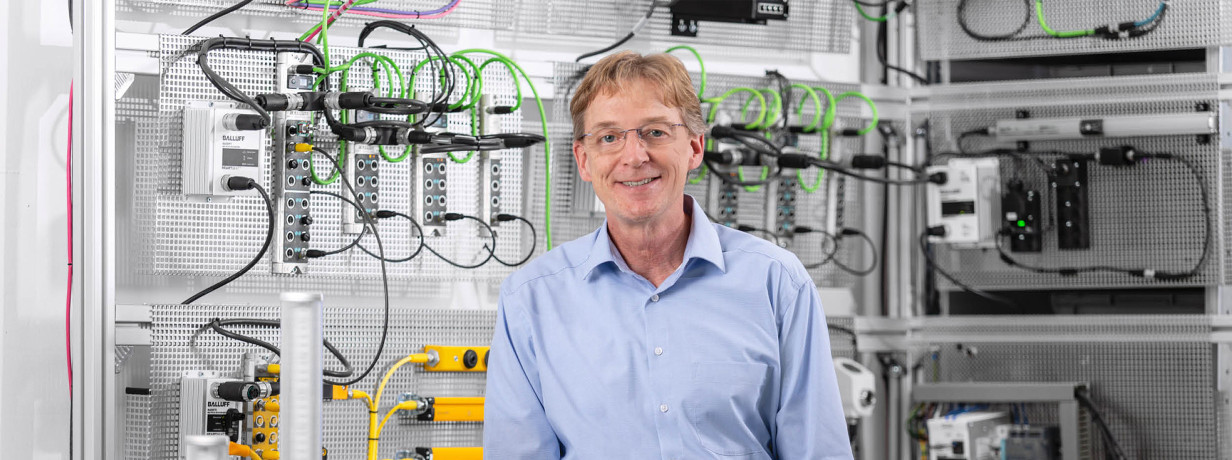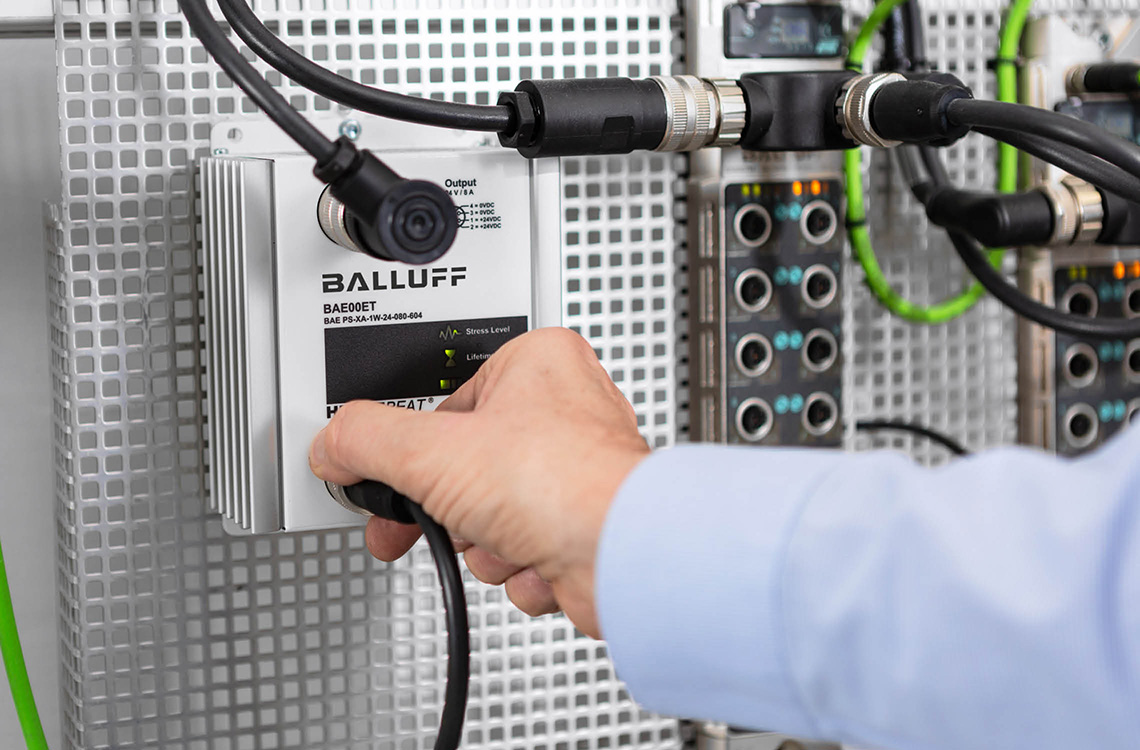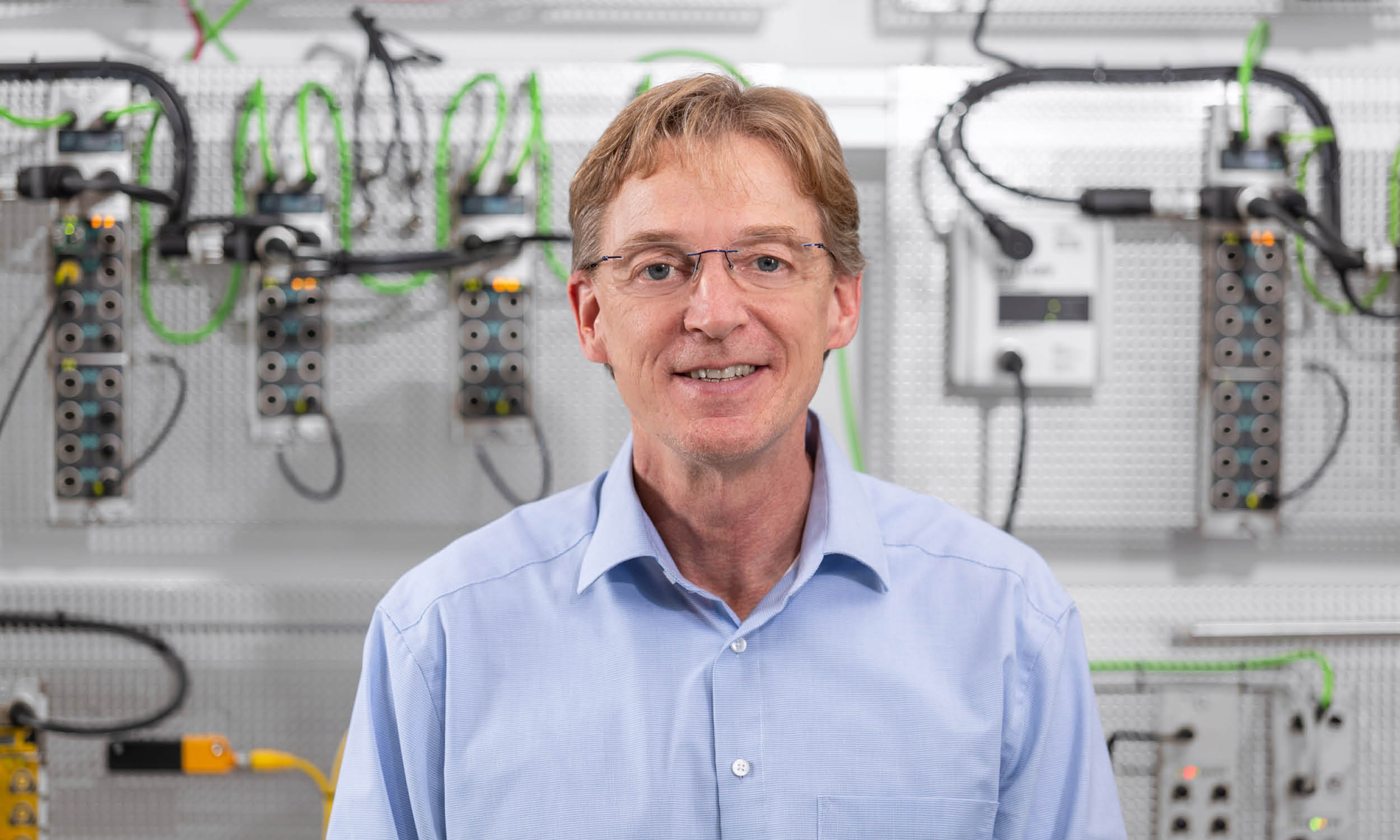18.12.2023
Network technology is the center where everything comes together
As Head of Product Cluster Networking, Stephan Langer is responsible for network technology at Balluff. In the following interview, he talks about the customers‘ requirements, the challenges of the future — and what excites him most about this topic.

Network technology, meaning the connection between systems, has been a recurring topic in the automation industry for many years. How has the market developed and where are we today?
Looking back, we can see several exciting developments all at once. Fieldbus technology has already been around for more than thirty years. The idea was to create an infrastructure that transports data from the sensors to the control, enabling networked automation. In the beginning, every control supplier offered proprietary bus systems. But the demand for standardization grew increasingly stronger. This was followed by the transition to standardized fieldbuses such as Profibus or Devicenet and finally Industrial Ethernet, meaning a fieldbus based on Ethernet technology. Today, we are in the middle of the Industrial Internet of Things (IIoT) and are facing the challenge to not only integrate operational technology (OT), but also information technology (IT) into communications. We want to link both worlds, and to do so we also need to further develop network technology. This is the only way we can reach our most important goal — to increase efficiency.
What would that look like?
It’s becoming increasingly important for users to operate their machines as efficiently as possible. What condition is my machine in? What about the environment? What do I have to do to avoid possible downtimes? Answering all these questions is only possible if the decisive information is available, so I depend on data — and I need to be able to capture, transport, and evaluate this data quickly and easily.
And this is where network technology comes into play?
Exactly. Balluff has always generated signals, whether it was using photoelectric, inductive, or ultrasonic sensors. The result can be process data, but also increasingly operational data, which provides information on the environment and condition. However, we knew very early on that we have to provide ways to ensure that the signals arrive where they are needed in the required time, quality and quantity, both in OT and IT. That is why we have relied on IO-Link, the standard for seamless communication between field level and control, from the very beginning. To make a long story short: network technology completes our portfolio for generating, transporting, and processing data. This way, we can offer our customers a complete solution. It is the center where everything comes together.
 Balluff's networking portfolio offers a wide range of network modules for fieldbus technologies, I/O modules, and switches.
Balluff's networking portfolio offers a wide range of network modules for fieldbus technologies, I/O modules, and switches.
Which products in the Balluff portfolio are particularly important in this context?
We offer a wide range of network modules for fieldbus technologies. Our portfolio also contains so-called I/O modules which serve as an interface between control systems as well as sensors, actuators, and machines. In addition to that, we offer switches that ensure that the data reaches its destination in the users’ complex networks.
Speaking of users – what is important to customers when it comes to network technology?
International standards are definitely of great importance, at all levels. Standardization not only fosters homogeneity and quality, but also increases the focus on cyber security. Beyond that, speed — and the ability to access a wide range of components — are still what counts for our customers.
How does Balluff address these requirements?
We communicate clearly which standards we aim to meet at the industrial level. In addition, we take care to maintain the focus of our portfolio while also offering a broad and high-quality product range. One advantage is our great expertise with standards, security, and software. At Balluff, more than one hundred software developers worldwide work closely with product development to ensure that all the software for all components also meets all the requirements. We are very well positioned in this area.
Let’s take a look into the future. Where is Balluff headed when it comes to network technology?
Wouldn’t it be great to have a standardized network, meaning a communication protocol for all OT and IT dimensions? Our industry has been concerned with this question for some time. But it is only possible through a combination of the different standards.
The open standard for interfaces OPC (Open Platform Communications) will play an important role in this context in the future, as will Single Pair Ethernet, which is a further development of Ethernet that allows for a much faster transmission covering longer distances. And then there is the issue of cloud controlling. If controls were to migrate to the cloud, this would also have an impact on future network technology.
 The full-blooded automation expert: Stephan Langer, Head of the Networking product cluster, has been working in the automation industry for more than 25 years.
The full-blooded automation expert: Stephan Langer, Head of the Networking product cluster, has been working in the automation industry for more than 25 years.
Let’s end with a more personal question. You have been working in automation für more than 25 years. What is it that drives you professionally?
I’m simply committed to automation, through and through (laughs). Controlling systems and machinery has fascinated me since my days at university. That was exactly my thing, and I’ve stuck with it ever since. What keeps me going is the fact that the industry is ever changing. And the fact that we at Balluff are part of it and develop the solutions needed. I just really enjoy that.
